
The Norton Motorcycle Company is a brand of motorcycles headquartered in Solihull, West Midlands,, England. For some years around 1990, the rights to use the name on motorcycles was owned by North American financiers.
Triumph Engineering Co Ltd was a British motorcycle manufacturing company, based originally in Coventry and then in Meriden. A new company, Triumph Motorcycles Ltd, based in Hinckley, gained the name rights after the end of the company in the 1980s and is now one of the world's major motorcycle manufacturers.

Laverda was an Italian manufacturer of high performance motorcycles. The motorcycles in their day gained a reputation for being robust and innovative.

The Triumph Trident and BSA Rocket 3 was a technically advanced, high-performance roadster motorcycle made by Triumph Engineering and BSA from 1968 to 1975, and sold under both the Triumph and BSA marques. Alongside the Honda CB750, and later the Kawasaki triples, it brought a new level of sophistication to street motorcycles, marking the beginning of the superbike era. The Honda CB750 overshadowed the Trident to be remembered as the 'first superbike', in spite of the Triumph Trident actually debuting before the Honda by a few weeks.

The Triumph Bonneville is a standard motorcycle featuring a parallel-twin four-stroke engine and manufactured in three generations over three separate production runs.
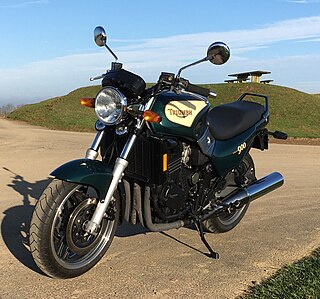
The Triumph Trident is a three-cylinder motorcycle of either 750 cc or 900 cc capacity. These bikes were produced from 1991 to 1998 at Hinckley, Leicestershire, England, by Triumph Motorcycles Ltd, the successor business to the defunct Triumph Engineering at Meriden Works, Warwickshire, England.

Geoff Monty was an English professional motorcycle racer, constructor, rider-sponsor and retail dealer, initially based in Kingston on Thames and later – under the name Monty and Ward – Twickenham areas, near London, with a move to Edenbridge, Kent by 1968.
Norton Villiers Triumph (NVT) was a British motorcycle manufacturer, formed by the British government to continue the UK motorcycling industry, until the company's ultimate demise.

Edward Turner was an English motorcycle designer. He was born in Camberwell in the London Borough of Southwark, on the day King Edward VII was proclaimed King. In 1915, Turner had his first ride on a motorcycle, a Light Tourist New Imperial.
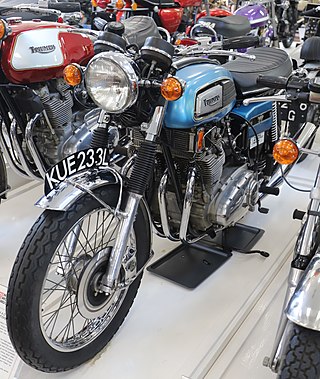
The so-called Triumph Quadrant was a "bitsa" designed and built in secret by Doug Hele in 1973. It was a 1,000 cc four-cylinder motorcycle made up from Trident parts. Essentially, the fourth cylinder came from grafting on an extra middle crankcase unit; but since the primary chaincase and final drive sprocket could not be relocated, the fourth cylinder protruded on the right hand side of the bike. The top speed was reputedly 125 mph.
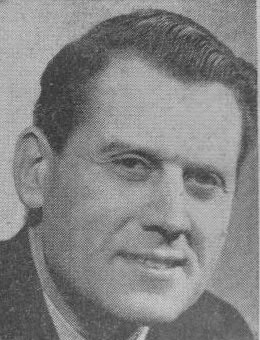
Douglas Lionel Hele was a pioneering British motorcycle engineer with Triumph and other firms: BSA, Douglas and Norton. He was born in Birmingham in 1919 and died in Hagley, Worcestershire on 2 November 2001.

The Triumph Thruxton is a series of British motorcycles with parallel-twin engines and sports styling. The name Thruxton was first applied to a handbuilt machine for endurance racing in the mid 1960s, and later revived in the 2000s.

Triumph Motorcycles Ltd is the largest UK-owned motorcycle manufacturer, established in 1983 by John Bloor after the original company Triumph Engineering went into receivership. The new company, initially called Bonneville Coventry Ltd, continued Triumph's lineage of motorcycle production since 1902. They have major manufacturing facilities in Thailand.
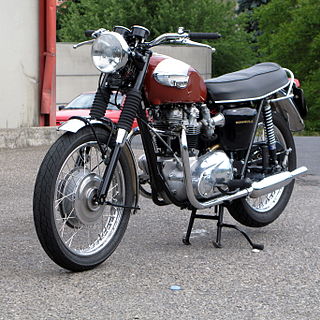
The Triumph Bonneville T120 is a motorcycle originally made by Triumph Engineering from 1959 to 1975. It was the first model of the Bonneville series, which was continued by Triumph Motorcycles Ltd. The T120 was discontinued in favour of the larger 750 cc T140 in the early 1970s.

The Triumph Tiger 110 is a British sports motorcycle that Triumph first made at their Coventry factory between 1953 and 1961. The T110 was developed from the Triumph Thunderbird and first appeared in 1954.
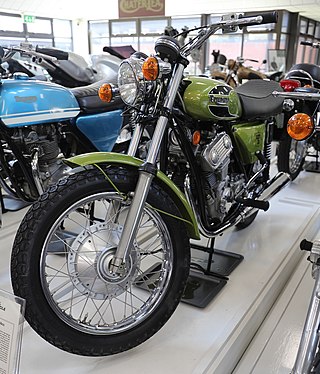
The Triumph Bandit was a British motorcycle manufactured as a prototype by Triumph in 1970. Originally designed by Edward Turner as his last project it was subsequently substantially modified at Triumph by a greatly critical Bert Hopwood and Doug Hele. Despite their work, the Bandit never went into commercial production, and only five have survived, making them very rare.
Colin Jordan Seeley was a British motorcycle retailer who later became a motorcycle sidecar racer, motorcycle designer, constructor and retailer of accessories. In 1992 he was involved in running the Norton Rotary race team.
The Hyde Harrier is a British sports motorcycle designed by Norman Hyde and unveiled at the British motorcycle show in 1987. It used donor engines from the Meriden Triumph Bonneville twin or Triumph Trident triple and a frame developed by Harris Performance, along with performance brakes by AP Lockheed and Dymag wheels.

BSA motorcycles were made by the Birmingham Small Arms Company Limited (BSA), which was a major British industrial combine, a group of businesses manufacturing military and sporting firearms; bicycles; motorcycles; cars; buses and bodies; steel; iron castings; hand, power, and machine tools; coal cleaning and handling plants; sintered metals; and hard chrome process.
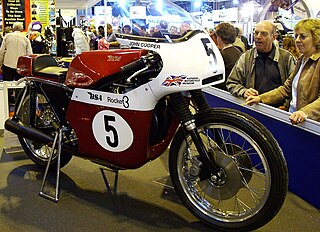
The BSA/Triumph racing triples were three cylinder 750 cc racing motorcycles manufactured by BSA/Triumph and raced with factory support from 1969-1974. There were road racing, production racing, endurance racing and flat track variants. The machines were based on the road-going BSA Rocket 3/Triumph Trident.














